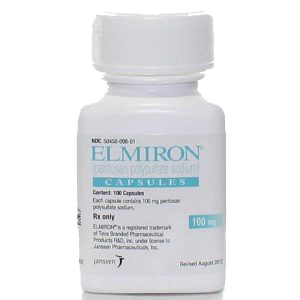Duodenoscopes are specialized endoscopes used primarily for Endoscopic Retrograde Cholangiopancreatography, or ERCP. Duodenoscopes are side-viewing endoscopes that have the advantage of viewing the major duodenal papilla on its face. They also typically have a lever that is used to manipulate an elevator located at the tip of the endoscope. Endoscopic professionals can, through this lever, raise and lower accessories passed through the working channel into the field of view. Thus, they facilitate access to the bile duct and pancreatic duct, which is helpful for the cannulation of the papilla.
Prescription Name and Overview
While duodenoscopes are manufactured under a range of product family names, the leading manufacturers of are Pentax and Olympus.
What is it used for?
Duodenoscopes are typically used for treating or diagnosing the following illnesses:
- Gallstones (small masses that form in the gallbladder and can get stuck in the bile duct)
- Infection
- Trauma or surgical complications in bile or pancreatic ducts
- Tumors or cancers of the bile ducts
- Acute pancreatitis (inflammation of the pancreas)
- Chronic pancreatitis
- Pancreatic pseudocysts (fluid-filled sac in the abdomen)
- Tumors or cancers of the pancreas
How does it work?
Duodenoscopes, like endoscopes, are used to examine the interior of a hollow organ or cavity of the body. They are inserted directly into the organ. The flexible, lighted tubes of this scope are threaded down the throat and through the mouth and stomach into the small intestine.
What are the Approved Uses?
Duodensoscopes are commonly used to remove gallstones, heal pancreatitis, and drain bile ducts, among other procedures.
Production Anecdotes / History
Basil Hirschowitz and Larry Curtiss invented the first fiber optic endoscope in 1957. Earlier in the 1950s, Harold Hopkins designed a “fibroscope” consisting of a bundle of flexible glass fibers able to coherently transmit an image.
Precautions
In 2015, the US Food and Drug Administration (FDA) cautioned about the risk of transmitting an infection through contaminated duodenoscope equipment. Furthermore, the FDA recommended four additional steps healthcare facilities can take to clean infection-prone duodenoscopes beyond meticulously following the manufacturer’s instructions. The FDA acknowledged that not every healthcare facility may have the resources and expertise to implement these precautionary measures.
FDA Warnings (History of)
The FDA has asked manufacturers to provide evidence that their recommended disinfection methods work, said Dr. Stephen Ostroff, the agency’s chief scientist.
“Institutions appear to have been performing the recommended procedures, and doing them extremely well,” said Dr. Ostroff. But the recent infections, at Ronald Reagan UCLA Medical Center, show that additional precautions may be needed, he said.
Duodenoscopes have been implicated in similar outbreaks at other hospitals. In 2013, 39 patients at Advocate Lutheran General Hospital in Park Ridge, Ill., were infected with carbapenem-resistant Enterobacteriaceae (CRE), also the cause of the infections in Los Angeles.
The FDA suggests implementing one or more of the following measures to minimize the risk of spreading infection with duodenoscopes:
- Microbiological culturing
- Ethylene oxide gas sterilization
- Liquid chemical sterilant processing system
- Repeat high-level disinfection
In 2015, patient deaths due to a superbug allegedly caused by unsanitary duodenoscopes sparked panic. Lawsuits mounted against Olympus Medical Systems, one of three manufacturers with duodenoscopes on the U.S. market while hospitals scrambled to find solutions to the problem. Eventually, an FDA advisory panel declared the devices unsafe.
Even though the FDA offered suggestions, the agency had no perfect answer to the duodenoscope crisis. Ultimately, the agency ordered all three manufacturers of dudoensocpes (Olympus, Fujifilm Medical Systems, and Pentax of America) to conduct postmarket surveillance studies to see how the difficult-to-clean devices are reprocessed in real-world clinical settings.
The data from all three companies are fed into one sampling and culturing study, which is designed to evaluate the percentage of clinically used duodenoscopes which remain contaminated with viable microorganisms, even after following labeled reprocessing instructions.
Lawsuits
In 2017, a jury ordered Olympus to pay a Seattle hospital $6.6 million in damages tied to a deadly superbug outbreak — and told the hospital to pay $1 million to a deceased patient’s family.
In 2018, duodenoscope maker Olympus Corp. agreed to pay an undisclosed sum to settle lawsuits by two Seattle-area women whose husbands died after contracting “superbug” infections following procedures involving the company’s flawed medical device.
Most recently, key medical experts indicate that the duodenoscope may need to be completely redesigned or recalled from the market since it is nearly impossible to properly sterilize the device between patients.
According to a recent report published in the New York Times, tests indicate that 1-in-20 duodenoscopes retain bacteria between patients, which can increase the risk of serious and potentially life-threatening infections and disease.
Cited Sources
- “Different Types of Endoscopes and What They’re Used For” http://www.proscopesystems.com/uncategorized/different-types-endoscopes-theyre-used/
- “FDA Issues Cleaning Precautions for Duodenoscopes” http://dev.rtmagazine.com/department-management/clinical/fda-issues-cleaning-precautions-for-duodenoscopes/
- “Two Seattle Area Women Settle Wrongful Death Superbug Lawsuits” https://www.seattletimes.com/seattle-news/health/two-seattle-area-women-settle-wrongful-death-superbug-lawsuits-with-medical-scope-manufacturer
- “Dirty Scopes Are Still a Big Problem: https://www.mddionline.com/dirty-scopes-are-still-big-problem
- “Scope Maker Olympus Hit with $6.6 million Verdict in Superbug Outbreak Case” https://khn.org/news/scope-maker-olympus-hit-with-6-6-million-verdict-in-superbug-outbreak-case
- “After Deady Infections, FDA Asks Makers About Cleaning Methods” https://www.nytimes.com/2015/02/26/us/after-deadly-infections-fda-asks-device-makers-about-cleaning-methods.html

